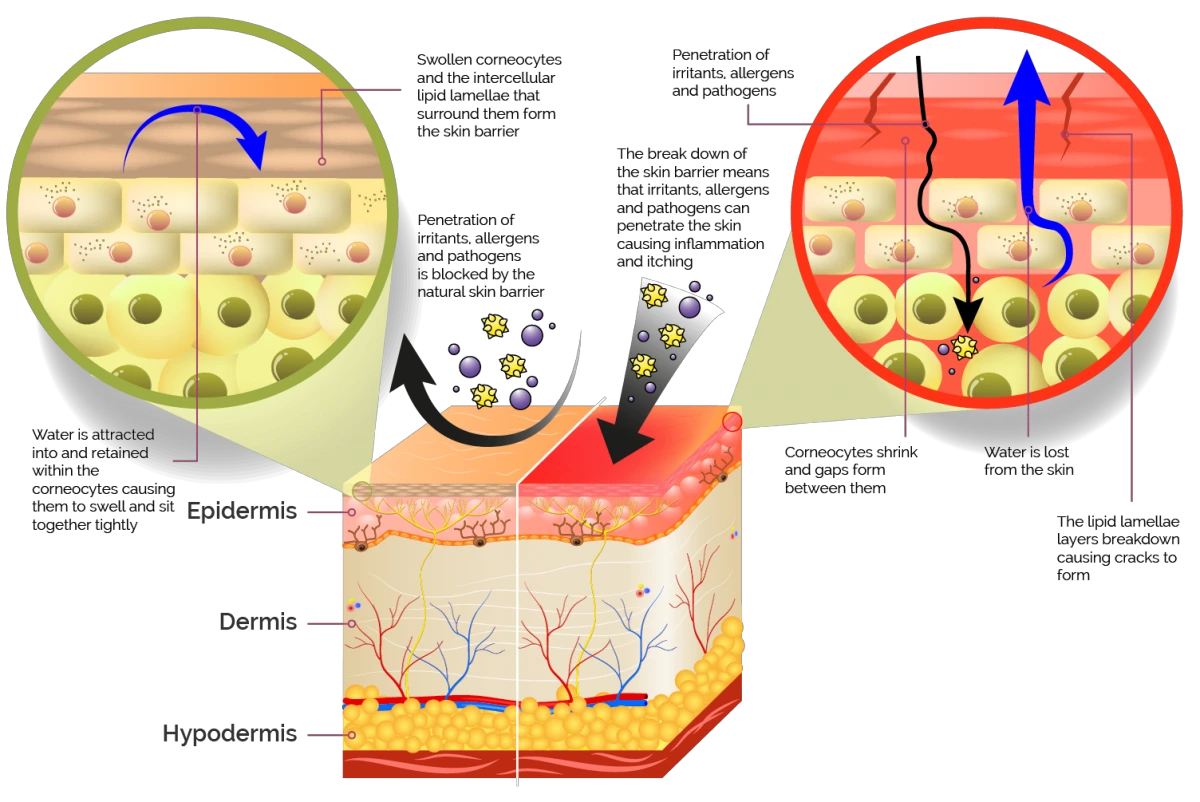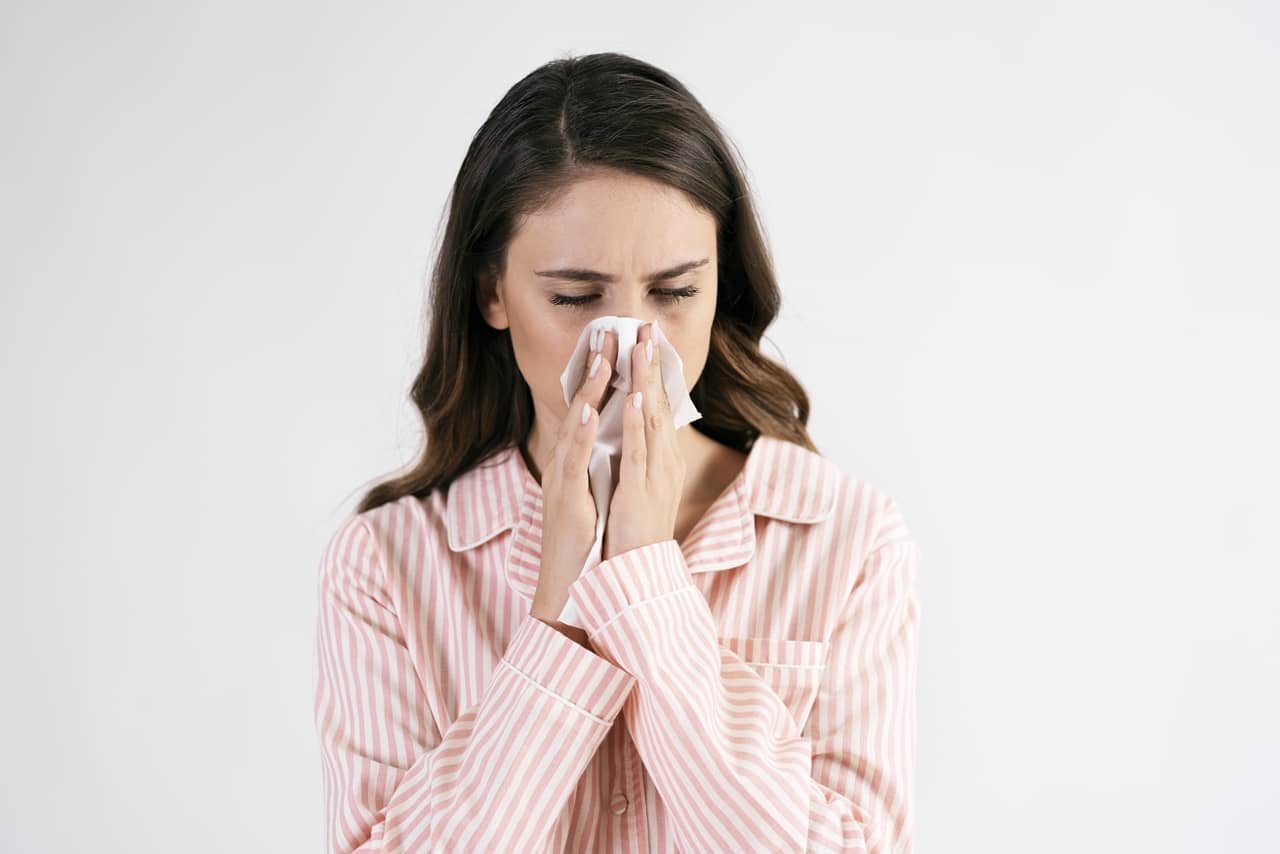A skin rash refers to a change in the skin’s appearance, texture, or color. It can manifest in different ways, such as bumps, blisters, or redness, and may be accompanied by itching, pain, or irritation. Skin rashes can result from various factors, including allergies, infections, medications, or underlying health conditions. Examples of common skin rashes include eczema, psoriasis, hives, and contact dermatitis. Effective treatment of skin rashes depends on identifying the underlying cause and may involve the use of over-the-counter or prescription medications, creams or ointments, and lifestyle modifications.
Some common examples of skin rashes include eczema, psoriasis, hives, and contact dermatitis. Treatment for skin rashes depends on the underlying cause and may include over-the-counter creams or ointments, prescription medications, or lifestyle changes.
What Are The 5 Types of Rashes?
There are several types of rashes that can affect the skin. Here are 5 common types of rashes:
Contact Dermatitis:
This rash is caused by contact with an irritant or allergen, such as poison ivy or certain chemicals. Contact dermatitis is a type of skin rash that occurs when the skin comes into contact with an irritant or allergen. This can include things like chemicals, soaps, plants, or metals like nickel. Symptoms of contact dermatitis can include redness, itching, swelling, and blisters.

In some cases, the rash may become infected if the skin is scratched or broken. Treatment for contact dermatitis usually involves avoiding the irritant or allergen that caused the rash, along with the use of over-the-counter creams or ointments to reduce inflammation and itching. In severe cases, prescription medications or topical corticosteroids may be necessary to control symptoms. With proper treatment and management, most cases of contact dermatitis can be successfully treated and prevented from recurring in the future.
Eczema:
Eczema is a chronic skin condition characterized by dry, itchy patches that can become red and inflamed. Eczema is a common skin condition that affects millions of people worldwide. It causes red, itchy, and inflamed skin, often appearing in patches or areas of the body. Eczema can be caused by a variety of factors, such as genetics, environmental triggers, or an overactive immune system. While there is no known cure for eczema, there are various treatments available to help manage symptoms and reduce flare-ups.

These may include topical creams, ointments, or oral medications. It’s important to seek medical attention if you suspect you have eczema, as early diagnosis and treatment can help prevent complications and improve quality of life. If you or someone you know is dealing with eczema, it’s essential to stay informed about the condition and work with a healthcare professional to create a personalized treatment plan.
Psoriasis:
Psoriasis is a chronic autoimmune condition that affects the skin, causing red, scaly patches. It is not contagious and can occur on any part of the body. Psoriasis can be triggered by various factors, including stress, infections, certain medications, and injury to the skin. While there is no cure for psoriasis, there are several treatments available that can help manage the symptoms.

These include topical creams, oral medications, light therapy, and lifestyle changes. If you suspect you may have psoriasis, it is important to consult a healthcare professional for an accurate diagnosis and appropriate treatment plan. By seeking medical help early on, you can improve your quality of life and minimize the impact of psoriasis on your daily activities.
Hives:
Hives are raised, itchy welts that can appear anywhere on the body and are usually caused by an allergic reaction. Hives, also known as urticaria, are a skin condition characterized by itchy, red, raised bumps on the skin. Hives can be triggered by a variety of factors, including allergies, medications, infections, and stress. While hives are usually not serious, they can be uncomfortable and affect your quality of life. There are several treatment options available, including over-the-counter antihistamines, prescription medications, and lifestyle changes.

If you experience hives, it is important to identify and avoid any triggers that may be causing them. Seeking medical attention is recommended if the hives last for more than a few days or if they are accompanied by other symptoms, such as difficulty breathing or swelling of the face or throat. By taking proper care of your skin and identifying triggers, you can effectively manage hives and minimize their impact on your daily life.
Rosacea:
Rosacea is a chronic skin condition that causes redness and inflammation on the face, particularly on the cheeks, nose, chin, and forehead. Rosacea is a common chronic skin condition that affects the face, causing redness, flushing, and acne-like bumps. It is more common in fair-skinned individuals and can be triggered by factors such as sun exposure, stress, alcohol, spicy foods, and certain medications.

While there is no cure for rosacea, there are several treatment options available that can help manage its symptoms. These include topical creams, oral medications, laser therapy, and lifestyle changes. It is important to seek medical attention if you suspect you may have rosacea, as early diagnosis and treatment can prevent the condition from worsening. By avoiding triggers and adhering to a proper skincare regimen, you can effectively manage rosacea and improve your overall quality of life.
It’s important to note that these are just a few examples of common rashes, and that there are many other types of skin rashes that can occur. If you’re experiencing a rash, it’s best to consult with a healthcare provider for an accurate diagnosis and appropriate treatment.
What Are The Main Causes of Skin Rashes?
Skin rashes can have many different causes, including:
Allergies: Allergic reactions to foods, medications, or other substances can cause rashes.
Infections: Bacterial, viral, or fungal infections can cause rashes.
Contact with irritants: Contact with certain chemicals, soaps, or other irritants can cause rashes.
Autoimmune disorders: Conditions such as lupus or psoriasis can cause rashes.
Genetic factors: Some people may be genetically predisposed to developing certain types of rashes.
Stress: Stress can cause or exacerbate certain skin conditions, such as eczema.
Insect bites or stings: Mosquito bites, tick bites, or bee stings can cause localized rashes.
Heat or sweat: Hot or humid weather, as well as excessive sweating, can cause rashes.
Medications: Some medications can cause rashes as a side effect.
It’s important to identify the underlying cause of a skin rash in order to properly treat it. If you’re experiencing a rash, it’s best to consult with a healthcare provider for an accurate diagnosis and appropriate treatment.
What Is The Best Treatment for a Rash?
The best treatment for a rash depends on the underlying cause of the rash. Here are some general tips for treating a rash:
- Keep the affected area clean and dry.
- Avoid scratching the rash, as this can cause it to worsen or become infected.
- Apply a cool compress to the affected area to help soothe itching and inflammation.
- Use over-the-counter creams or ointments, such as hydrocortisone cream, to help reduce itching and inflammation.
- Take an antihistamine to help relieve itching, especially if the rash is caused by an allergic reaction.
- If the rash is caused by an infection, your healthcare provider may prescribe an antibiotic or antifungal medication.
If the rash is caused by an underlying medical condition, such as psoriasis or eczema, your healthcare provider may prescribe a specific medication or treatment plan.
It’s important to consult with a healthcare provider for an accurate diagnosis and appropriate treatment for a rash, especially if it’s accompanied by other symptoms or is severe.
When to Worry About a Rash in Adults?
While many rashes in adults are not serious and can be treated with over-the-counter remedies, there are certain situations in which you should seek medical attention for a rash. Here are some signs that you should be concerned about a rash in adults:
- The rash is accompanied by other symptoms, such as fever, chills, or joint pain.
- The rash covers a large area of the body or is spreading rapidly.
- The rash is painful, blistering, or oozing fluid.
- The rash is accompanied by difficulty breathing or swallowing, which may indicate a severe allergic reaction.
- The rash is located on the face, genitals, or in skin folds, as these areas are more prone to developing serious infections.
- The rash is not responding to over-the-counter treatments or is worsening despite treatment.
If you’re experiencing any of these symptoms along with a rash, it’s important to seek medical attention as soon as possible. A healthcare provider can provide an accurate diagnosis and appropriate treatment for a rash and help determine if any underlying medical conditions are contributing to the rash.
- Top 10 Skin Dermatologists in Agra: Your Guide to Flawless Skin Care
- Moringa Powder Benefits for Skin: Unlocking Nature’s Secret for Radiant Beauty
- Best Skin Doctor in Siliguri: A Guide to Healthy Skin
- Xerosis of Skin: Causes, Symptoms, and Effective Management
- Skin Bliss Clinics: The Comprehensive Range of Skincare
- Treating Fungal Infections at Home: Effective Remedies and Tips
- Apollo Hospital Guwahati: A Comprehensive Healthcare Destination with Specialized Departments
- What Is Skin Rash? Uncovering the Truth Behind Skin Rashes: Causes, Symptoms, and Treatment Options
- Top 11 Dermatologists in Chandigarh – Find the Right Doctor for Your Skin Needs
- Fungal Skin Infections: Causes, Symptoms, and Treatment















